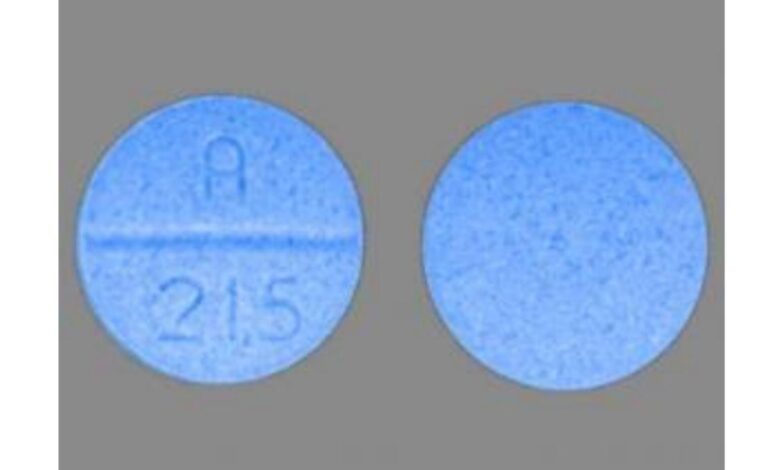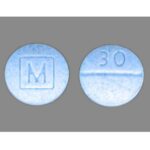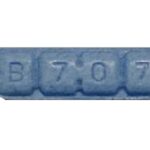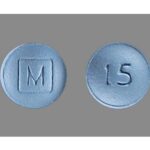What Does The Blue Round A 215 Pill Contain?

The blue round pill with the imprint A 215 has been identified as Oxycodone Hydrochloride 30 mg supplied by Actavis. Oxycodone is used to relieve moderate to severe pain. Oxycodone extended-release tablets and extended-release capsules are used to relieve severe pain in people who are expected to need pain medication around the clock for a long time and who cannot be treated with other medications.
FDA has not classified the drug for risk during pregnancy. Oxycodone 30 mg is classified as a Schedule 2 controlled substance under the Controlled Substance Act (CSA). Schedule 2 drugs and substances have a high potential for abuse. They differ from Schedule I drugs in that they do have a currently accepted medical use in treatment in the U.S. or a currently accepted medical use with severe restrictions.
How should this medicine be used?
Take A 215 pill exactly as directed. Do not take more of it, take it more often, or take it in a different way than directed by your doctor. Do not stop taking oxycodone without talking to your doctor. If you stop taking this medication suddenly, you may experience withdrawal symptoms such as restlessness, watery eyes, runny nose, sneezing, yawning, sweating, chills, muscle or joint aches or pains, weakness, irritability, anxiety, depression, difficulty falling asleep or staying asleep, cramps, nausea, vomiting, diarrhea, loss of appetite, fast heartbeat, and fast breathing. Your doctor will probably decrease your dose gradually.
While taking A 215 pill, discuss with your healthcare provider your pain treatment goals, length of treatment, and other ways to manage your pain. Tell your doctor if you or anyone in your family drinks or has ever drunk large amounts of alcohol, uses or has ever used street drugs, or has overused prescription medications, or has had an overdose, or if you have or have ever had depression or another mental illness. There is a greater risk that you will overuse oxycodone if you have or have ever had any of these conditions. Talk to your healthcare provider immediately and ask for guidance if you think that you have an opioid addiction or call the U.S. Substance Abuse and Mental Health Services Administration (SAMHSA) National Helpline at 1-800-662-HELP.
What side effects can this medication cause?
A 215 pill may cause side effects. Tell your doctor if any of these symptoms, are severe or do not go away:
- dry mouth
- stomach pain
- drowsiness
- flushing
- headache
- mood changes
Some side effects can be serious. If you experience any of these symptoms call your doctor immediately or get emergency medical help:
- changes in heartbeat
- agitation, hallucinations (seeing things or hearing voices that do not exist), fever, sweating, confusion, fast heartbeat, shivering, severe muscle stiffness or twitching, loss of coordination, nausea, vomiting, or diarrhea
- nausea, vomiting, loss of appetite, weakness, or dizziness
- inability to get or keep an erection
- irregular menstruation
- decreased sexual desire
- chest pain
- hives
- itching
- rash
- swelling of the face, throat, tongue, lips, eyes, hands, feet, ankles, or lower legs
- hoarseness
- difficulty breathing or swallowing
- seizures
- extreme drowsiness
- lightheadedness when changing positions
If you experience a serious side effect, you or your doctor may send a report to the Food and Drug Administration’s (FDA) MedWatch Adverse Event Reporting program online
Medication Safety
Oxycodone may cause serious or life-threatening breathing problems, especially during the first 24 to 72 hours of your treatment and any time your dose is increased. Your doctor will monitor you carefully during your treatment. Tell your doctor if you have or have ever had slowed breathing or asthma. Your doctor will probably tell you not to take oxycodone. Also tell your doctor if you have or have ever had lung disease such as chronic obstructive pulmonary disease (COPD; a group of diseases that affect the lungs and airways), a head injury a brain tumor, or any condition that increases the amount of pressure in your brain.
The risk that you will develop breathing problems may be higher if you are an older adult or are weak or malnourished due to disease. If you experience any of the following symptoms, call your doctor immediately or get emergency medical treatment: slowed breathing, long pauses between breaths, or shortness of breath.
Taking certain other medications with oxycodone may increase the risk of serious or life-threatening breathing problems, sedation, or coma. Tell your doctor and pharmacist before taking any medications or supplement.





